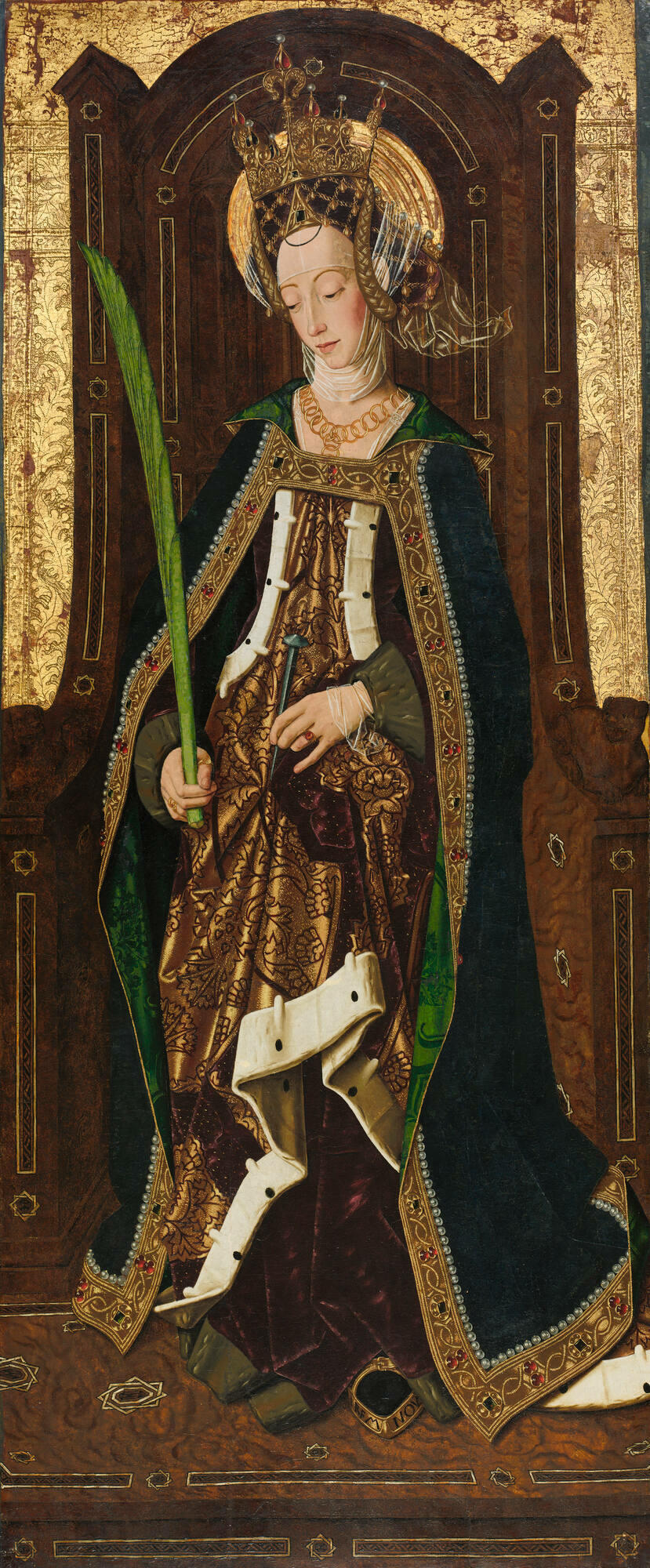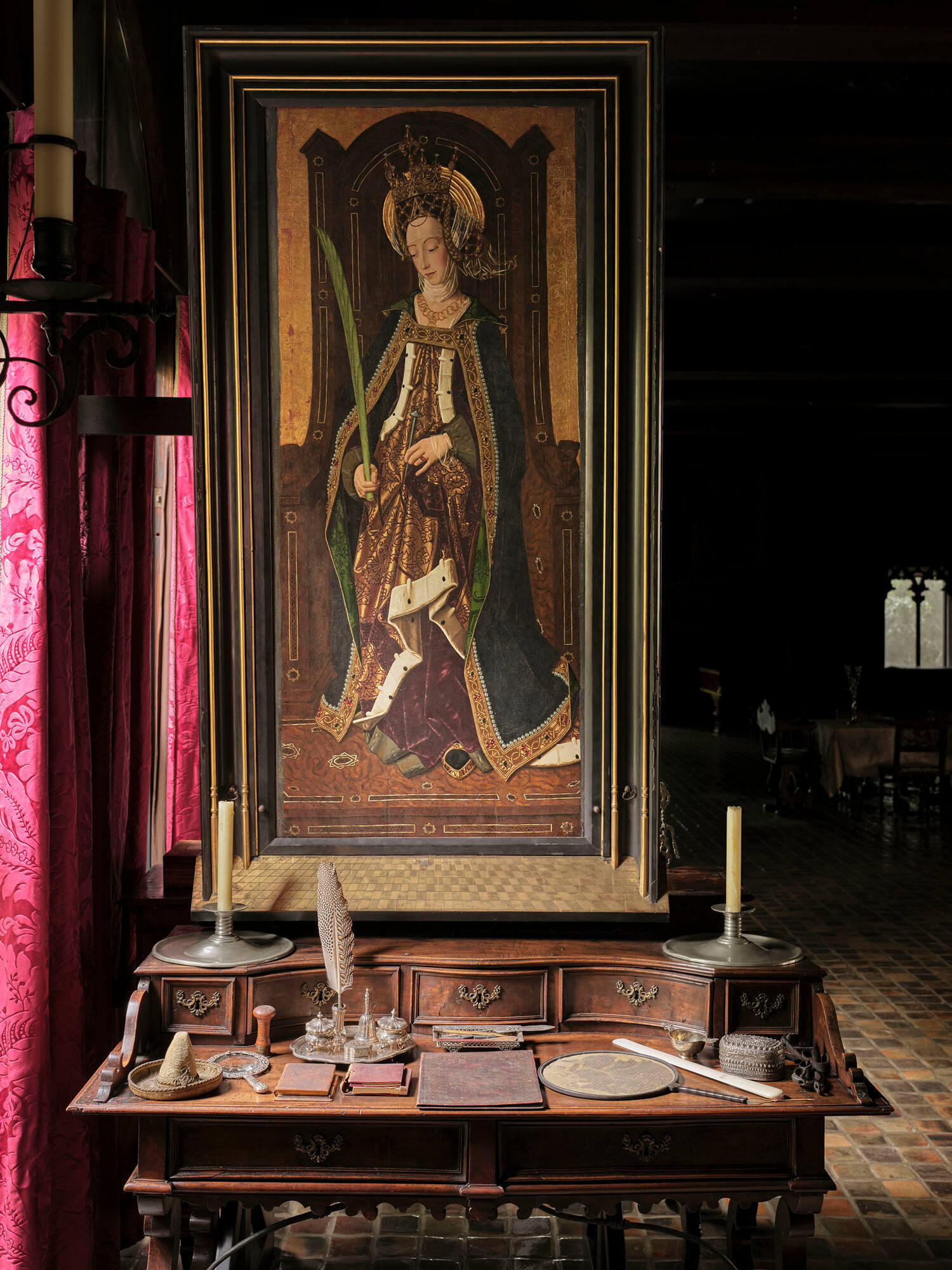In 1900, artist Ralph Wormeley Curtis, a family friend and occasional art advisor to Isabella, visited the Universal Exposition in Paris, an elaborate celebration of the previous century's progress and a heady glimpse of what was ahead. He joined throngs of hundreds of thousands of people each day, mobbing the halls of the world's fair.

Brown University Library, Public domain, via Wikimedia Commons
The Eiffel Tower and Celestial Globe, during the Paris World Fair, 1900. Photographic print, 26.5 x 20 cm.
The Paris Exposition boasted all sorts of captivating sights, from a ferris wheel to talking films. There were pagodas from Japan and a mock Elizabethan mansion. For Curtis, it was something in the Belgian Pavilion that piqued their interest: a gilded painting of a saint richly dressed in gold brocade with a cloak trimmed in ermine and pearls.

Isabella Stewart Gardner Museum, Boston (P19e25)
Bartolomé Bermejo (Spanish, about 1436–about 1498), Saint Engracia, about 1474. Oil on pine panel, 164 x 73 cm (64 9/16 x 28 3/4 in.)
The glittering painting was owned by the Belgian collector and diplomat Léon de Somzée (1837–1901). Although mistakenly identified as St. Helen, it was actually the central panel of an altarpiece about the life of Engracia, a Portuguese princess (and later a saint) tortured by the Romans. Its artist was Spanish painter Bartolomé Bermejo. Perhaps drawn to the vibrant colors and rich surface detail or the story of a female saint, Curtis wrote to Gardner, describing it as “the most interesting thing in the whole Exposition” and pursued the painting on her behalf. Curtis approached Somzée with an offer in the spring of 1901 but was unsuccessful.
It will be one of the gems of your galleries.
It wasn’t until three years later, in 1904, after Somzée’s death, that Saint Engracia appeared on the market. Remembering their admiration for the work, Isabella and Curtis sent Fernand Robert, Isabella’s regular agent in Paris, to an auction in Brussels to bid on the painting. This time they won, outbidding museums from Brussels and Budapest.

Isabella Stewart Gardner Museum, Boston. Photo: Sean Dungan
Bartolomé Bermejo’s Saint Engracia, in the Tapestry Room
A few days before the auction, Curtis wrote to Gardner, “Saint Engracia has evidently got on in society since I first met her in a dark corner of the staircase of the Belgian Pavilion at the last Paris Exhibition. Almost no one noticed her then!” With Isabella’s prominent placement of St Engracia in the Tapestry Room, Bermejo’s masterpiece is certainly noticed by many today.
You May Also Like

Read More on the Blog
Purchasing a Masterpiece: Titian’s Rape of Europa

Read More on the Blog
A Tiny Sombrero

Read More on the Blog
Isabella and the Hispanic Society